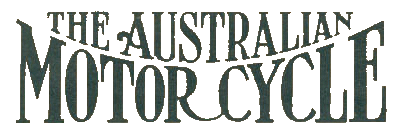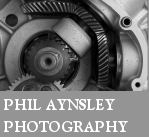


Edworthy 1906 Replica
Made by Kenneth Mervyn Edworthy, Eastern Creek, New South Wales, Australia, 1996, based on an Edworthy motorcycle built in Rozelle, NSW in 1906
The reproduction Edworthy track-racing motorcycle is a copy of one of the earliest motorcycles built in NSW by the Edworthy bicycle manufacturing and racing family in 1906. Stylistically and technologically it represents the cross over in development between the bicycle and motorcycle. The first practical internal combustion engine applied to a tricycle was developed in 1886 while the term motorcycle was not applied until 1893. The first recorded motorcycle race held in Australia occurred in 1901 around the Sydney Cricket Ground. The Edworthy family was a pioneer in motorcycle construction in New South Wales so it is fitting that the company founder's great grandson, Kenneth Edworthy, should build this reproduction 90 years later, in 1996, with much the same equipment.
Kenneth Edworthy was born 17 December 1945 at Annandale, NSW , the son of Mervyn Llewyllyn Edworthy (1921-1983) and Reita May Grace (1922-1992). Ken was a plumber by trade but after a motor vehicle accident he was unable able to work so devoted his time to researching his family history. This in turn activated an interest in bicycle history especially relating to his family's bicycle building and repairing business established by his great grandfather, Edward (Ted) Edworthy (c.1858-1940).
Ken decided to build the motorcycle in memory of his late father. It was built from the only known photograph of the last of three Edworthy motorcycles built in 1906 by members of the Edworthy family. The reproduction was undertaken by altering a vintage bicycle frame from the early 1900s and adding a 2-stroke engine. It is not known whether this frame was an original Edworthy one left over from Ken's father's old bicycle shop. The "correct" Villiers or J.A.P. type engine was impossible to procure so Ken rigged up an old lawn mower engine to resemble a vintage engine. The engine does not operate. Ken's knowledge of bending and working with pipes was advantageous during the construction of the motorcycle. Ken Edworthy is a member of the NSW Penny Farthing Club. As well as the motorcycle, he has built two impressive reproduction penny farthings and a Howe tricycle of 1881, the latter of which Ken has ridden in local parades and at the 2006 finish of the Goulburn to Sydney Cycling Classic at Camden.
The history of the Edworthy family's Sydney cycling business goes back to the Edward Edworthy, born c. 1858 in Newport, Monmouthshire, Wales, the son of James Edworthy, a mechanic, and Sarah Vickery. Edward worked his passage to Australia as a marine engineer arriving in Sydney in 1882. Edward initially lived at Pyrmont and worked in an engineering factory. On 11 February 1885 at St Bartholomew's Church of England, Sydney, he married Mary Louisa Jane (Polly) Higgans and they had nine children.
In 1888 Edward Edworthy joined the NSW Railways (Engineers' Branch) and worked as a fitter at the Eveleigh Railway Workshops. He was later posted to Lithgow in 1889 overseeing railway bridge construction. In Lithgow Edward was a foundation member of the Workmen's Club, as well as the first Masonic Lodge formed in Lithgow. He remained a member for over 50 years and was also in the Druids order. Edward stayed with the Railways until 1895 and the following year opened his first bicycle shop at 97 Western Road, Rozelle, thereby commencing the long history of the Edworthy Cycle & Motor Works in Sydney. This store was used until 1917.
Edward and his two eldest sons, Jack and Silas Edworthy, were also interested in motorcycles when the idea of motorcycling was still in its infancy. The Edworthy family built three motorcycles between 1896 and 1906, said to have been either the first or third to be built in New South Wales.
The first motorcycles to be built overseas were velocipedes and bicycles fitted with steam engines. The earliest example which has survived was made in France by Ernest Michaux in 1868 or 1869. A similar one was made in America by Silvester Roper about the same time. The steam-driven motorcycle was never widely successful because it was not very powerful, despite its great weight. An American, Lucius Copeland, continued to design and sell steam bicycles until the 1880s. By then, work was going ahead on the internal combustion engine.
In 1876 N.A. Otto designed the first practical internal combustion engine in Germany. His assistant, Gottlieb Daimler, set up on his own to improve and produced these engines. Daimler tested a petrol engine on a heavy tricycle in 1886. This was really only a test vehicle for the engine, and was not intended to be a motorcycle. An English inventor, Edward Butler, also used an internal combustion engine for his "Petrol-Cycle" in 1888 but there was little enthusiasm for his engine.
The word motorrad (motorcycle) was first used to describe a bicycle with an internal combustion engine in 1893. It was manufactured by Hilderbrand and Wolfmueller and was sold in France and Germany and could reach 24 mph (38.6 km/h). Leadership of the motorcycle industry was taken over by the French firm of the Marquis de Dion and his partner George Bouton. In 1895 they designed a small, compact engine which was mounted behind the axle of a tricycle. It was so successful that it is recognized as an ancestor of the motorcar as well as the motorcycle. The idea of motorised cycles spread rapidly and were produced and sold widely in the 1890s. Nearly all early motorcycles either used or copied the de Dion designs. The first international Tourist Trophy (TT) race for motorcycles was established on the Isle of Man in 1907. It was won by Charlie Collier, the winner on a Matchless driven at just under 40 mph.
Australia's first recorded motorcycle race was held on New Year's day 1901 around a concrete cycling track at the Sydney Cricket Ground. Jack Green averaged 37.7 km/h on his motorised tricycle. Motorcycling took off in popularity; there was even a women's club in South Australia in 1912. Motorcycles were used during the First World War and ridden by dispatched raiders. By 1919 the motorcycle had become an accepted means of transport. Motorcycle racing played a big part in encouraging designers to build better and more reliable machines. The speedway or dirt track form of motorcycle racing on a cinder-covered track first became popular in Australia and spread throughout the world. By the 1930s speedway racing was as fashionable as football and cricket are today and motorcycle riders were the most highly paid sportsmen.
In Australia, the Edworthy family must have seen newspapers and magazines with photographs showing the early European and/or American motorcycles and decided to build their own. The first was built in 1896 which comprised a single-cylinder Minerva engine to a modified bicycle frame.1 This was said to have been the first or third built in New South Wales. Two other motorcycles were built, none are known to survive but one is rumoured to have been taken to New Zealand. The third motorcycle, built in 1906, was photographed with Jack Edworthy sitting on it on the front verandah of the Edworthy's family's bicycle shop at 97 Weston Road, Rozelle. It was this photograph that bicycle enthusiast, Ken Edworthy, used 90 years later to build a reproduction of his family-built motorcycle. Bicycle production in Australia from the 1890s was undertaken in numerous small family workshops and the motorcycle was produced at a time when the assemblage of parts was put together by enthusiastic blacksmiths without the use of modern technology.
The Edworthys did not think the motorcycle would become popular so instead concentrated on bicycle production, which by the 1930s was enormously popular, especially bicycle racing. Not being able to compete with the large manufacturers and mass production, the Edworthy family concentrated on low volume purpose-built bicycles producing everything from racing bicycles to delivery bicycles and children's bicycles. In the same way, 90 years later, Ken Edworthy reproduced his ancestor's motorcycle with "bush mechanics" aided by his knowledge of plumbing and welding.
Gift of Kenneth Mervyn Edworthy, 2006
Text, slightly edited, courtesy Powerhouse Museum
Notes
1. The machine pictured in the vintage photograph c1906 has an Antoine engine, and the comment below says that Edworthy did not use Minerva.
Jan 12 2018, Howard Burrows
I have the only original photo of the Edworthy framed and hung above my fireplace. The above description of the 1906 Edworthy is slightly wrong in that the machine did not have a Minerva engine fitted at all, it was a Antoine engine....see my photos (link in credit page).
An Edworthy was not sent over to NZ, the confusion comes about because when Silas Edworthy died in c1963 he had a couple of Australian-built Quirks Mona's motorcycles (I still have some parts belonging to one of them)....Paddy Ryan was on the scene the same day that Silas died and bought all the motorcycles and parts in the shop (a couple of MAG NOS engines from out of the shopfront window for starters)...the two Quirks were later sold to Stuart Campbell. Stuart sold them both on without even picking them up from Ryan's Motorcycles to a NZ vintage enthusiast who eventually sold them a few years ago and they have both been restored in NZ (photos on my Flickr site). The original 1960's NZ buyer also had a couple of Williamson flat twins that have been sold at the same time as the Quirks, the Williamson's have both gone to the same buyer in Holland and both are now restored and being rallied extensively.
Unfortunately stories get twisted over time!
Sources: Howard Burrows, Powerhouse Museum
If you have a query or information about these veteran motorcycles, please please contact us